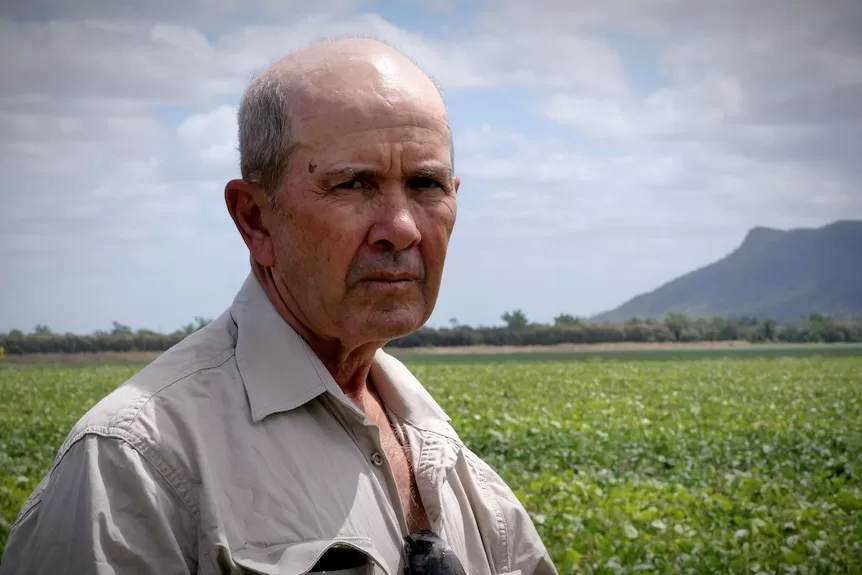- In short: An international company has launched fresh plans to develop a mine in central Queensland that locals have fought against for more than a decade.
- Farmers and community members are concerned the mine will contaminate the environment and drinking water supplies.
- What’s next? Public submissions about the proposal close in early May.
For more than a decade, the tiny town of Baralaba has fought a David-versus-Goliath battle against major international companies and their plans to develop a coal mine near the Dawson River.
After taking their fight all the way to the United Nations, the community thought they had won.
But now a new company has lodged a plan locals fear will contaminate drinking water supplies and prime agricultural land.
Bronny McLellan and her husband Paul operate a cattle and lychee property near the Dawson River and are part of Save the Dawson, a grassroots community group of farmers who oppose the project.
“It takes a toll on your family,” Ms McLellan said.
“Our grandchildren, which are here on the farm, are sixth generation … it’s not a nice feeling to think you could be taken over by a mine.”
Save the Dawson chairperson and farmer Lex Webb said the risk of an environmental catastrophe was too high.
He feared run-off from the mine would pollute the Dawson River and drinking water supplies, with coal mine dust on crops also a major concern.
“It’s very stressful to everyone involved because we’re farmers. We’re not lobbyists,” Mr Webb said.
Mine size already reduced
Baralaba Coal is proposing a new metallurgical coal mine south of Baralaba, about 115 kilometres west of Rockhampton.
The company is majority owned by US-based American Metals and Coal International (AMCI).
If approved, it would mine 2.5 million tonnes of coal per year for export and operate for 23 years — subject to several factors, including market conditions.
The project would support 521 ongoing jobs, which would continue to provide employment when its other mine, Baralaba North, winds down.
Baralaba Coal said it had minimised the size of the mine following community consultation by halving the amount of coal it would produce.
According to environmental documents, the risk of run-off contamination would be reduced through measures like dam infrastructure.
The company said it had also moved the project so it was predominantly off the flood plain, minimising the risk from flooding.
While Save the Dawson acknowledged the proposal had changed, members said they were not confident in the flood modelling because of the rising threat of climate change.
“We’re trying to protect prime ag land because they’re not making this type of country anymore,” Mr Webb said.
Fears for water, Great Barrier Reef
Douglas Graham is a Gooreng Gooreng, Lamalama and Jiman man who lives in Woorabinda, a nearby Aboriginal and Torres Strait Islander community that, for many, has a strong cultural connection to the Dawson River.
The town, alongside Baralaba, also relies on the river for drinking water.
“It’s a big worry just trying to survive now but when the water goes, we all go,” Mr Graham said.
“We’re going to suffer because of the quality of the water.”
Matilda Widdowson from Environmental Advocacy in Central Queensland said it would also pollute water that flows into the Great Barrier Reef.
“The reef is already feeling the pressure of the fifth bleaching event in eight years, and simply can’t afford to be having new coal projects put in that will continue to pollute the atmosphere and the water further,” she said.
Calls for premier to intervene
Save the Dawson is calling on Queensland Premier Steven Miles to visit Baralaba and reject the plan.
But Mr Miles said that was the role of the Department of Environment, Science and Innovation (DESI).
He said he was aware of the project and was happy to speak to concerned community members, but mining project assessments in Queensland were “well-established and stringent”.
Save the Dawson founding member Paul Stephenson said it was unfair locals had to continue the fight against the project, 12 years on.
“We’ve got farmers out working 18-hour days and then we’re expected to do the work of government in critiquing, analysing and applying legislation,” Mr Stephenson said.
DESI said it would consider all submissions as part of its assessment of the environmental impact statement.
It said Baralaba South would be required to respond to submissions and outline plans to address community concerns.
Baralaba Coal said it had been open and transparent about the future of the mine with the community.
The company said it had reopened its community office in town, held open sessions, and met with individuals about the project, among other measures.
A United Nations complaint
In 2021, locals thought they had won their fight against the proposal when US company Liberty Mutual confirmed it would not progress with plans to build the mine, after Save the Dawson filed a complaint with the United Nations.
But when Liberty Mutual sold Baralaba Coal to AMCI, the application was sold with it.
AMCI is not a signatory to a United Nation’s investment promise and plans were relaunched.
Public submissions close on May 1.
